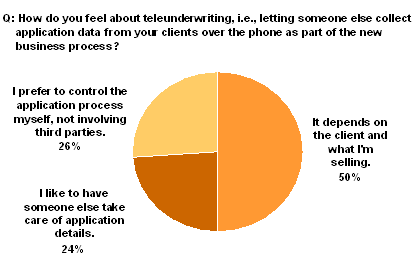Phoning It In: Teleunderwriting Comes of Age
Abstract
| Boston, MA, USA December 9, 2004 The lowly telephone may turn out to be a transformational tool as insurers rethink how they gather and analyze application data. Carriers have experimented with collection of life insurance application data over the phone for years. But why hasn稚 teleunderwriting really taken off? Changing attitudes and improved technology are poised to eliminate any remaining barriers. "The case for teleunderwriting is compelling," says senior analyst Craig Weber, author of . "Both carriers and producers can realize dramatic benefits by handing off application data collection to a call center. But to make it happen, carriers need to pry themselves away from traditional underwriting methods."Are Agents Warming Up To Teleunderwriting?  Weber notes that one of the traditional concerns about teleunderwriting has been alienation of key channel partners, who take a dim view of someone else痴 talking to "their" clients. But producers appear to be increasingly willing to try teleunderwriting, with 24 percent actually preferring to have someone else take care of application details (according to results of Celent痴 2004 producer survey). The report explores five key areas of opportunity that result from teleunderwriting, including 1) focusing agents on selling; 2) reducing costs; 3) reducing new business cycle time; 4) bringing new sales channels online more quickly; and 5) progressing toward a future vision for new business. "That fifth area is really the clincher," Weber says. "If the other areas don稚 generate enough enthusiasm to jump-start teleunderwriting, carriers should take a look at their overall new business technology and service strategies. For most carriers, the things they need to do to implement teleunderwriting will overlap with other priority initiatives, such as automating new business workflow, creating a common front end for all new business, and implementing more flexible sourcing strategies." The report outlines the experiences of two carriers that have used teleunderwriting effectively: The Hartford, and Baltimore Life. It also provides a benefit model that carriers can use to explore potential savings from improved new business process efficiency. This 28-page report contains 11 figures and four tables. A table of contents is available online. |
of Celent Communications' Life/Health Insurance research service can download the report electronically by clicking on the icon to the left. Non-members should contact info@celent.com for more information. |
|

